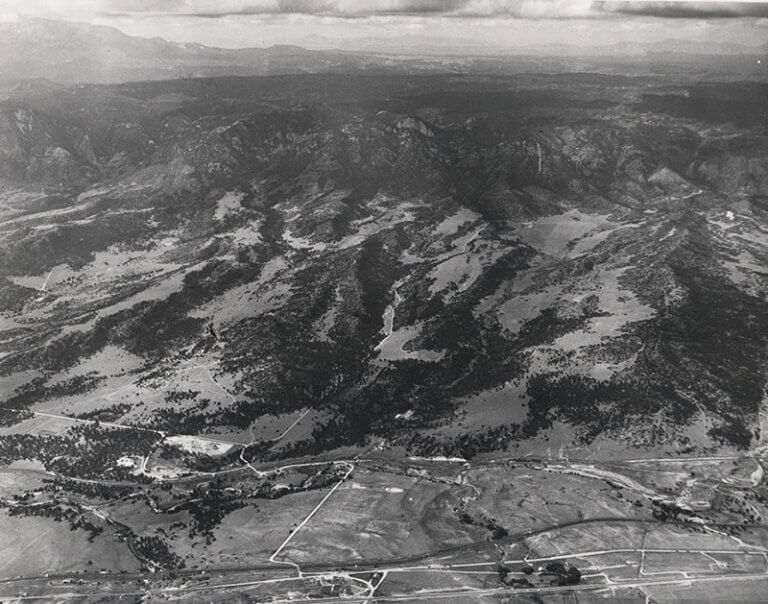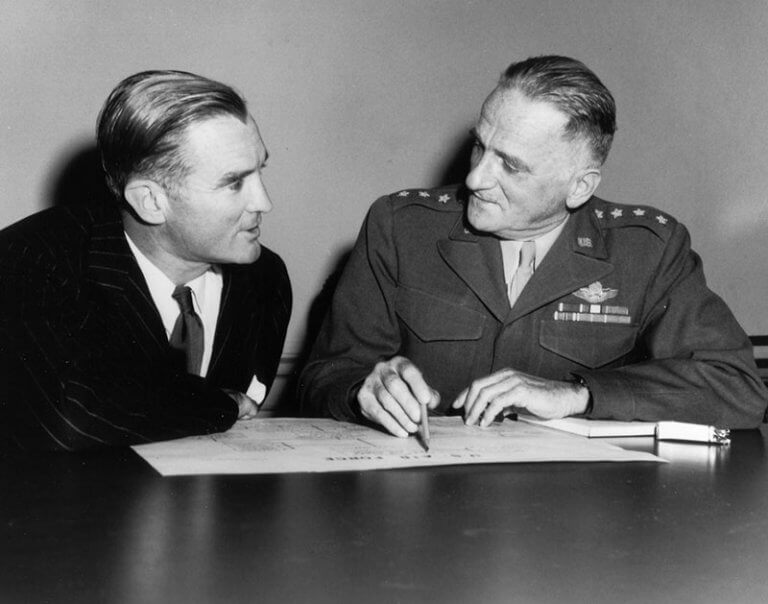THE EARLY YEARS
As aviation advanced after the Wright Brothers’ first flight, the nation’s military aviation service followed a constantly growing lineage from 1907 to 1947. Officials discussed the establishment of an aeronautical academy for decades, and when the Air Force became a separate service in 1947 under the National Security Act, plans for the U.S. Air Force Academy officially got underway.
The plan made little progress until 1949 when Secretary of Defense James Forrestal appointed a board of military and civilian educators. This board, headed by Dwight D. Eisenhower (then Columbia University president) and Robert L. Stearns (University of Colorado president), was tasked to recommend a general system of education for the Army, Navy and Air Force.
Congress finally authorized creation of the U.S. Air Force Academy in 1954. Harold E. Talbot, the Secretary of the Air Force at that time, appointed a commission to assist him select a permanent site. After traveling 21,000 miles and considering 580 proposed sites in 45 states, the commission recommended three locations – Alton, Illinois; Lake Geneva, Wisconsin; and Colorado Springs, Colorado.
The main concern for the Colorado location was if the Rocky Mountains or wind currents would affect flight training. Famed aviator Charles Lindbergh flew over the proposed site and declared it fit for flying. Shortly after, Secretary Talbot selected the Colorado Springs site, and the state of Colorado contributed $1 million toward the purchase of the property.

